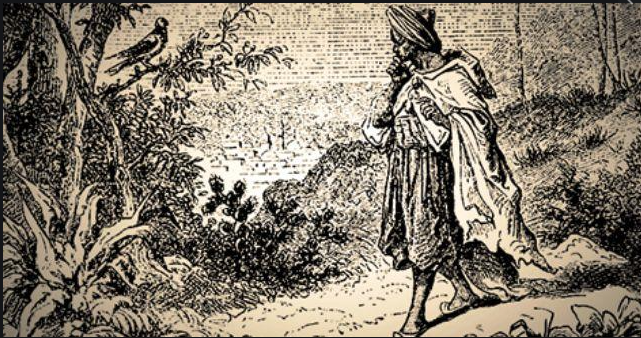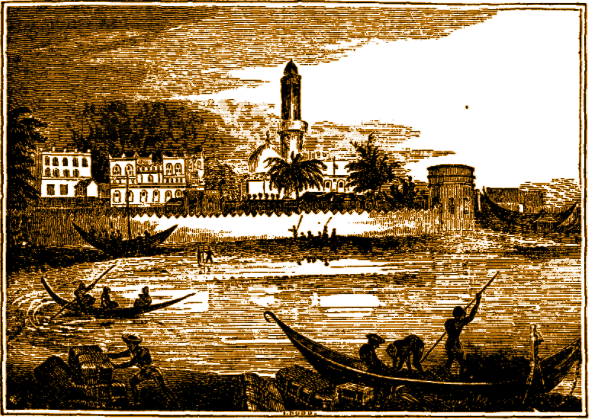The Discovery of Coffee
There are tons of legends and stories on the discovery of the beans but no one knows the exact time of its origin. The earliest evidence of coffee-drinking or the knowledge of the plant is from the early 15th century, in the Sufi monasteries of Yemen, spreading soon to Mecca and Medina. However, people believed that the plants originated from Ethiopia. According to one legend, the ancestors of today’s Oromo people in a region of Kaffa in Ethiopia were the first to recognize the energizing effect of the plant. However, no direct evidence found earlier than the 15th century indicating who used it as a stimulant, or where it first cultivated.
The story of Kaldi
One of the most famous stories about the coffee origin is the story of Kaldi. The story originated in 700AD, where a young goat herder stumbled upon a strange act of his goats. He found that his goats acting very excited after they ate some red berries from shrubs. Kaldi felt surprised and he shared his findings with a monk. The monk made the berries into a drink and found that it could keep him energetic and stay awake through long hours of evening prayers. He then shared the berries with the other monks and words on the mystical drink began to spread widely.

(Source: The Perfect Daily Grind)
In another version of the story, the monk did not approve of Kaldi’s findings. He threw the berries into the fire as he feared that the berries were the devil’s creation. However, as the pleasing aroma of the roasting beans filled the monastery, the pleasant smell attracted the monks. They quickly recovered the beans and make them into drinks.

(Source: The Ecclesial Vigilante)
Myth in Yemen
One legend says that a Yemenite Sufi mystic named Ghothul Akbar Nooruddin Abu al-Hasan al-Shadhili traveled through Ethiopia. On his travel, he noticed some unusually lively birds flying in the sky. He saw the birds eating mysterious berries from a tree. He then too tried the berries and felt the same vigor, not knowing the berries that he have tried were the coffee berries.
The Legend of Omar
According to an old chronicle, (preserved in the Abd-Al-Kadir manuscript) it says that a follower of Sheik Abou’l Hasan Schadheli – Omar discovered coffee. Although he has the ability to cure the sick through prayer, he got exiled from Mocha to a desert cave near Ousab for some sort of moral transgression. Omar tried to survive from starving, he chewed some berries from nearby shrubbery. One version of the story says that a bird brought him to a branch bearing red cherries after he cried out in despair for guidance from his master, Schadheli.
Omar’s attempt to consume the beans
In both stories, he found the berries too bitter to eat. He tried roasting the seeds to improve the flavor, but they became hard and he could not chew them. He then tried boiling the seeds to make them softer, which resulted in a fragrant black-brown liquid. Upon drinking the liquid, Omar felt revitalized and his energy stays sustained for days. When the story of the drink reached Mocha, Omar was made a saint and asked to return.

(Source: all about ETHIO)
The journey of coffee starts here.
Although the authenticity of the legend is yet to be confirmed, Ethiopia was undoubtedly the first place that the coffee plant originated. The first evidence of coffee-drinking appears in the middle of the 15th century, in the Sufi monasteries of Yemen in southern Arabia where monks drank it to stay alert during their nighttime devotions and long hours of prayer. However, the drinks might introduced from Ethiopia to Yemen via trade across the Red Sea. Later, Yemeni traders brought the plants back to their homes and began to cultivate them there. It was then in the 15th century, born the first coffee plantation in the world.
Origin of “Mocha”
Yemen is also the origin of the term “mocha.” While today it is most often associated with chocolate-flavored coffee drinks, it was originally referred to the Mocha Port on Yemen’s Red Sea coast – A major trade center for the Mocha style of beans. Coffee became so popular and slowly introduced in Persia, Egypt, Syria, and Turkey. Coffee houses opened almost everywhere and became a place for people to gather and meet up.

(Source: gutenberg press)
Journey to the East
Yemen had dominated the coffee business, but came an Indian Sufi saint named “Baba Budan”. He secretly brought some beans back to India and began to cultivate them in Southern India at the hills of Chikmagalur, Karnataka. Arabica beans are the dominant varieties that were grown in the upper hills whereas Robusta beans are the major varieties grown in the lower level hills. Arabica was the first cultivated coffee species and could produce better coffee. Since then, coffee plantations have become more and more and India has become one of its biggest exporters in the world.

(source: Fresh Indian Coffee)
Journey to the West
Words spread quickly on this mystical black drink to the west. In the 17th century, it made its way into Venice, Italy. People became obese with this mystical drink that can revitalize people who drank it. However, some people are afraid of its dark texture and bitter taste, they eventually assumed that it was Satan’s creation. With the involvement of Pope Clement VIII, he solved the controversy. He tasted the drink himself and immediately fell in love with this wonderful drink. He then declared that the drinks should be allowed for everyone to enjoy. Since then, more and more coffee houses began to open all over in Italy, and slowly all over in Europe. Then, slowly made its way into big cities like England, Germany, France, Austria, and Holland. People started to appreciate this mystical black drink for it’s energizing effect.

(source: The History Notes)
Attempts to ban coffee
Although the drink was popular, things were not always smooth for these mystical beans. In the early 1500s, a theological court in Mecca declared this mysterious black drink forbidden due to its stimulating effect. However, these bans overturned in 1524 by an order of the Ottoman Turkish Sultan Suleiman I, with Grand Mufti (Islamic jurisconsults) Mehmet Ebussuud el-İmadi issuing a law allowing the consumption of coffee. A similar thing happened in Cairo, Egypt. In 1532, they banned the usage of coffee and the coffeehouses and sacked the warehouses containing the beans.

(Source: Bean to Mug)
Spreading around the world
Fierce competition begins to happen when the demand for coffee started to spread. Countries other than Arabia tried to cultivate their own coffee plants. In the 17th century, the Dutch attempted to plant the plants in India but failed. They then later cultivate the plants in Indonesia and have finally succeeded.
As a gift…
In 1714, the Mayor of Amsterdam gifted King Louis XIV of France a young coffee plant, the king later ordered to keep the plant protected in the Royal Botanical Garden in Paris. Gabriel Mathieu de Clieu, a young captain of the French Navy visited Paris. He managed to steal a seedling from the King’s plant and brought it back to Martinique. He secretly planted the seedling and spread the plantations throughout Martinique, St. Dominique, and Guadalupe. The plantations later populated across the rest of the Caribbean, South, and Central America.

(Source: History Of The Netherlands podcast)
How Coffee got to Brazil
In 1727, a Brazilian colonel named Francisco de Melo Palheta went to Guyana to obtain the coffee seedlings from the French. French, however, does not want to share the seedlings. That left Francisco no choice so he seduced the French Governor’s wife. Captivated by his good look, the Governor’s wife secretly gave him some seedlings before he left France. That was how coffee seedlings were brought to Brazil. In the year 1852, Brazil became one of the largest coffee producers in the world.

(Source: Casa Brasil)
Since then, coffee seedlings started to spread around the world. Various cultivation attempts carried out, some succeeded and some failed. By the end of the 18th century, coffee became one of the most exported commodities in the world. Until today, the continuous great demand for coffee made it still one of the most traded commodities in the world, just behind petroleum, and has become a mainstay of the modern diet.
Where does the word “Coffee” came from?
The word “coffee” entered the English language in 1582 via the Dutch koffie, borrowed from the Ottoman Turkish word “kahve”, in turn borrowed from the Arabic word “qahwah” (قهوة). The Arabic word “qahwah” originally referred to a type of wine, whose etymology given by Arab lexicographers as deriving from the verb “qahā” (قها, “to lack hunger”) in reference to the drink’s reputation as an appetite suppressant. The word “qahwah” sometimes alternatively traced to the Arabic word “quwwa” (“power, energy”), or to “Kaffa”, a medieval kingdom in Ethiopia that exported the beans to Arabia. However, these etymologies for “qahwah” have all been disputed. The name “qahwah” is not used for the berry or the coffee plant, which are known in Arabic as “bunn” and in Oromo as “būn”. (Source: Pogon Coffee)
Hmmm…sounds interesting…
After reading the history of this magical drink, are you moved to have a sip from it? Want to enjoy a free cup in your office? Contact Like Me Vending with your preferences and we will come back to you as soon as possible.
You might also be interested with these topics..

You should know these benefits of drinking Coffee!
Studies have shown that coffee has positive effects on your health. In this article, we will be sharing with you the benefits of drinking coffee!

Pantry: often-ignored important aspects at the workplace
The pantry has been one of the often-ignored aspects of the workplace but has a huge contribution when it comes to employees’ job satisfaction and impressing your clients.
